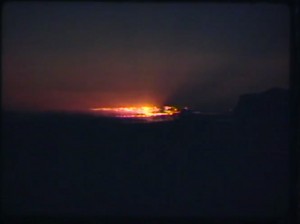
"In I Walked a Crooked Trail, O. L. Tapp has lured a good deal of motion and humor out of what must be one of the world's most static subjects — the Arches National Monument. Remembering that story interest is an important part of cinematics, Mr. Tapp has kept his very competent camera trained on continuous human action, letting his travelog unwind itself, very subtly, as a background. The film is limited by the essential triviality of its theme — the unfolding of a practical joke. But within its limits it does very well indeed." Movie Makers, Dec. 1950, 467-468.
"Un-staged documentary footage shot and edited by Sallie Wagner. Sallie's description of the film: 'Jimmy Hill flagging train at Chambers, Arizona, Post Office at Chambers, Bob Cassidy Postmaster, plane drop at Wide Ruins, Bill Cousins picking up package. Wide Ruins trading post exterior and interior, Bill and Sallie, Bill's office is original trading post of Day Brothers, Bill Cousins at front of airplane, crash of transcontinental racer on highway. Square dance, Eleanor Pratt in blue blouse near ladder, Jack Norton heavy set fellow, Phil Pratt extreme left, John Adair with back to screen, Dick Tryon [Tyron?] near rocks. Dwight Wagner - white shirt and tie near rose bush, Sallie in front of Spring house'." New Mexico State Archives.
"George Merz offers a masterful job of photography in his travel film, 'In The Sky Over Miami'." American Cinematographer, May 1952, 224.
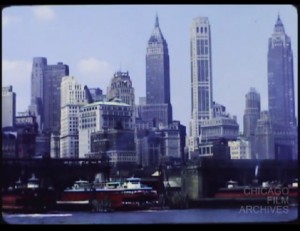
"Two part edited travelogue taking place in the Hudson Valley area. Part one begins at Coney Island, and then takes viewers through New York City before heading to places such as West Point and Poughkeepsie where cough drops are being made. Part two Includes much footage on Hudson river, the process of manufacturing wallpaper at Imperial Color and a visit to the North Pole theme park." Chicago Film Archives.
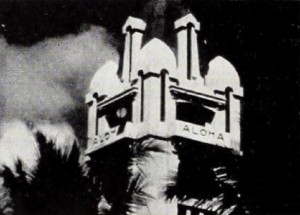
"This picture, we predict, will be both widely acclaimed and widely criticized for, in each case, that quality which people call "professional." If this prediction proves true, then the producer's purpose in making Invitation to Hawaii will have been conclusively achieved. For of the film Harold L. Thompson has written us at ACL as follows: "I made the picture largely as an experiment to see whether an amateur with sufficient enthusiasm could produce a 16mm. documentary which approached professional standards." The impression here is that on the case book of this experiment Dr. Thompson may now write: "Q.E.D." For Invitation to Hawaii has in every foot of it the polish and pace which one associates with professional standards. It was clearly planned, ably photographed and concisely edited. All in all, a brilliant piece of work." Movie Makers, Dec. 1951, 410.
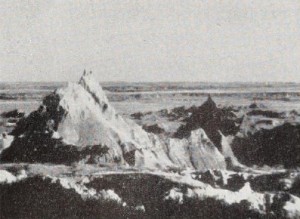
"Films about national parks and monuments fall into the traps of banality with greater ease than almost any other variety of footage. It was. therefore, with great delight that the judges reviewed Timothy and Delores Lawler's Isle of the Dead. For, using the famed Boecklin painting and the equally known Rachmaninoff music as theme and atmosphere, the Lawlers have produced a cinematic tone poem from the materials offered by Yellowstone and the Badlands. Their efforts completely dominate both music and painting, which become effective substrata of the esthetic whole. The film's great virtue and its slight defects spring from the same source — the single mood that the Lawlers have worked for and have achieved." Movie Makers, Dec. 1950, 464-465.
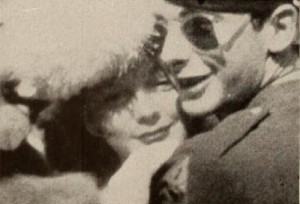
"An eye for topical touches and a persistence that would shame the most aggressive news cameraman are responsible for Terry Manos's success in recording the V-E Day activities in New York City. Without the aid of a telephoto lens and balked at every turn by finicking guards, Mr. Manos's camera nevertheless caught the full flavor of the celebration in Times Square as well as some amazingly sharp studies of the personalities who participated in the program at Central Park. For ignoring the theoretical limitations often ascribed to the 8mm. camera and producing a well knit movie of a great historical event, praise is due to an enterprising amateur." Movie Makers, Dec. 1946, 488.

"Jamie which won the PSA-MPD Gold Medal for the best film in the Festival, the MPD Scenario Film Award, and the MPD Golden Scissors Award (for the best film editing) is an 18-minute black-and-white 16mm film with sound on magnetic stripe. It is a Civil War drama of a young Union bugler's act of kindness toward a wounded Confederate and the tragic consequences. Approximately 1500 feet of film were exposed, this being boiled down to the final 630 feet. Klobukowski spent a year on the picture, from its original concept through the writing, scripting, obtaining uniforms, shooting, editing, and finally adding the sound. The latter is all original, the music being especially composed for the film by Paul Bentzen and played by students and staff of Wisconsin State University at Stevens Point. Location areas were wooded sections around Stevens Point, Custer, and West Best, Wisconsin. Participants in the battle scenes were members of the North-South Skirmish Association, and the costumes were either originals or exact replicas furnished by members of that organization" PSA Journal, Sept. 1966, 34.
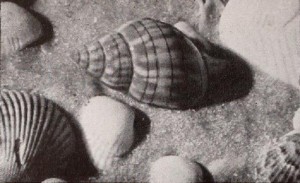
"You may have wandered idly along the seashore and picked up an attractive seashell, but, unless you are a conchologist, you will never know how far an interest in shells will carry you, until you have seen Jewels of the Sea, by W. W. Vincent, jr. This film is a story of collecting seashells. It tells, with freshness and enthusiasm, how shells are discovered on the shore, how they are cleaned and prepared for preservation and how they are studied. On the west coast of Florida, we see hunters searching for specimens ; we visit a shell shop and the home of a collector. The camera, plus color film, reveals the beauty of the specimens and presents intriguing mysteries, for some of the shells were built by mollusks that have never been seen alive. The source of their irridescent beauty is entirely unknown. Jewels of the Sea does not pretend to be an educational film about zoology, but it is informative as well as entertaining, and it is distinguished by flawless camera work." Movie Makers, Dec. 1943, 457, 474.
Total Pages: 23